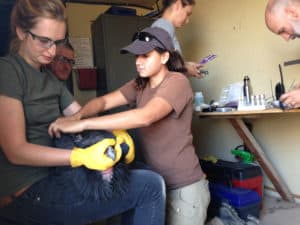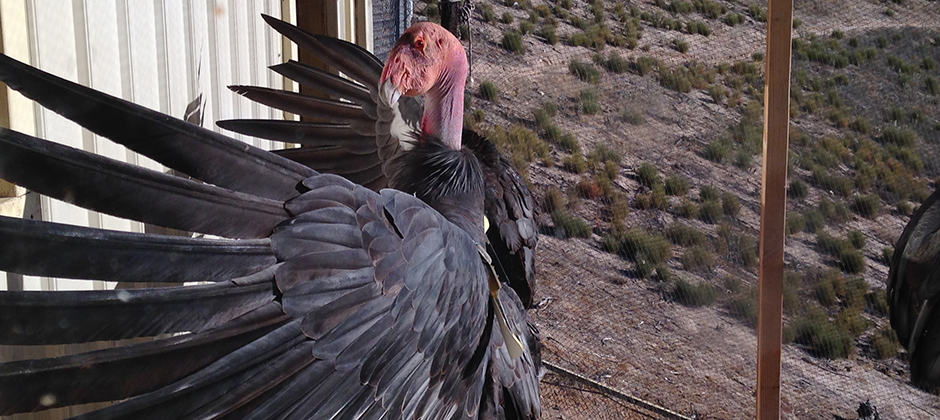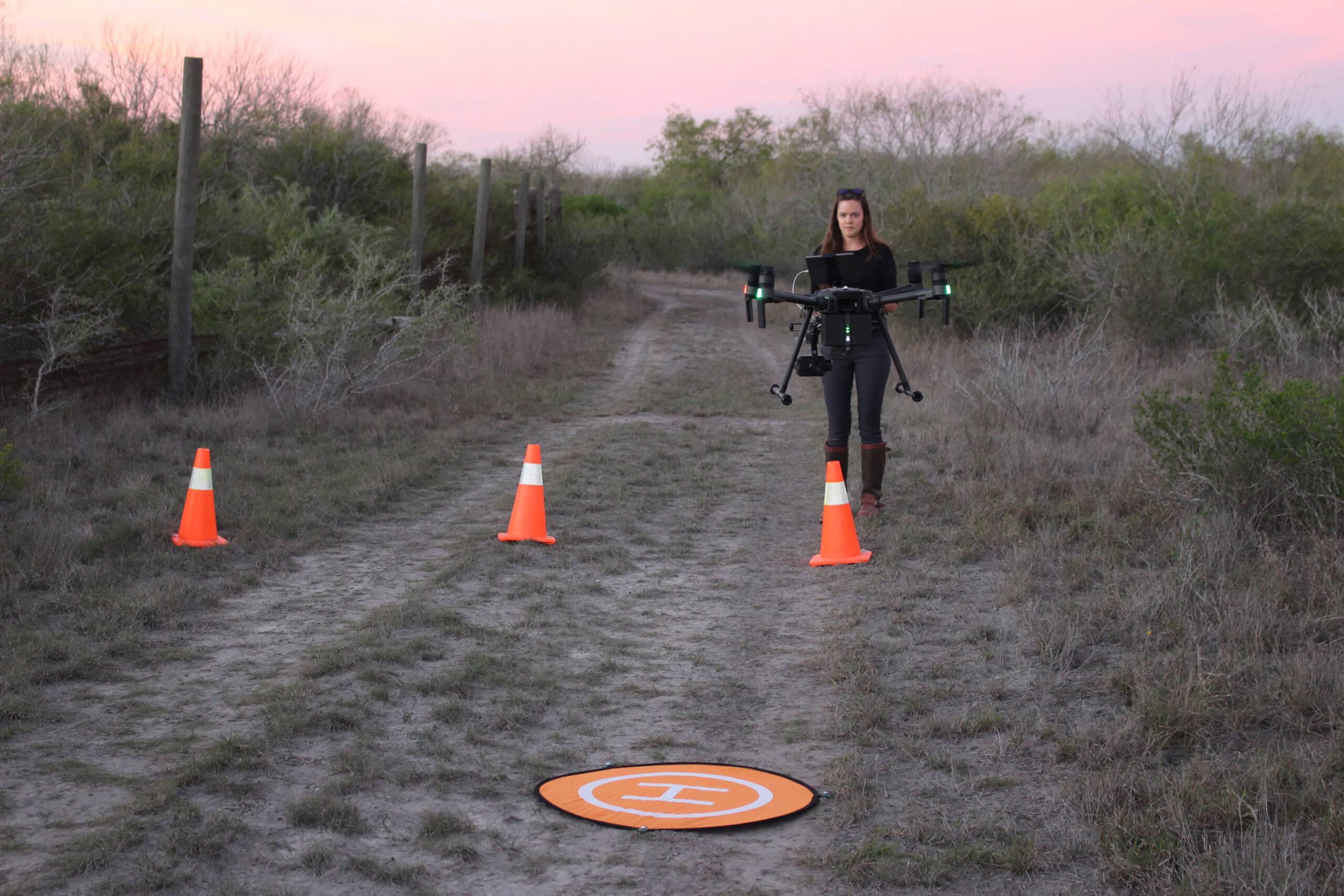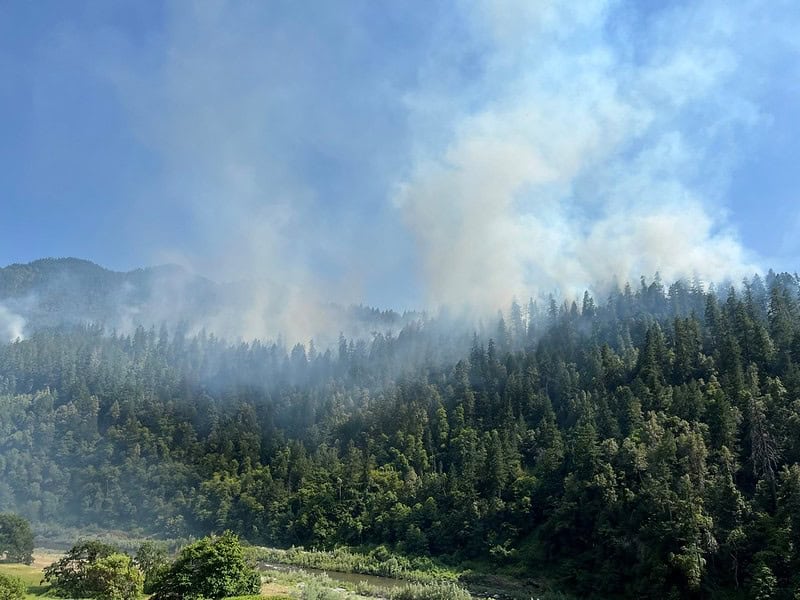Share this article
Lead causes sublethal stress levels in condors
While California condors often die from exposure to lead and other contaminants, those that survive may still experience sublethal stress impacts.
Researchers found that raptors that fed on marine mammal carcasses or that otherwise scavenged away from condor management sites had higher levels of stress than those that didn’t.
“The first thing that we noticed right away was that the wild condors were exhibiting higher glucocorticoid hormone responses to capture,” said Zeka Glucs, director of the Predatory Bird Research Group at the University of California, Santa Cruz and the lead author of a study published recently in Environmental Research. Glucocorticoid steroids are often used as an indicator of stress.
Glucs had previously worked with the California Condor Recovery Program in the state’s central area and had witnessed firsthand how many of the wild birds caught during health checkups had elevated or high levels of lead.
Lead poisoning is the most common cause of death in California condors (Gymnogyps californianus), but the giant birds also ingest PCBs, mercury, flame retardants and DDT-derived chemicals from scavenging marine mammal carcasses that wash up onshore. These toxins bio-accumulate from prey to predator and reach high levels in species like condors that sit at the top of the food chain.
While the wild population now numbers more than 500 birds, lead and other toxins are a massive obstacle in the birds’ recovery. Considered endangered by the U.S. Fish and Wildlife Service, wild condor populations may not be sustained without supplemental feeding.
When Glucs went back to pursue her PhD at the University of Santa Cruz, she wondered how lead and other chemicals were affecting birds that weren’t killed by the toxins.
“Because of what I knew about lead having irreversible effects on most organisms on any level, it was really apparent to me that there must be some sublethal impacts,” she said.
She and her co-authors studied stress hormones in particular since they can measure these in live birds. Live condors are captured twice a year, so researchers had an opportunity to examine how handling the condors affected the birds’ stress response and whether birds with more toxin exposure reacted differently in these situations.

Biologists Melissa Clark, in the baseball cap, and Amy List and from the Ventana Wildlife Society conduct a health check on a condor in Pinnacles National Park in California with. Credit: Zeka Glucs
The researchers collected blood and urate (similar to urine in mammals) samples from both wild birds and captive birds from 2013 to the end of 2016.
They noticed a difference in elevated stress levels of wild and captive condors as well and different stress response to handling. Wild condors exhibited more stress related to being captured than captive condors. While that may be at least partly due to captives being held in different conditions, Glucs said, researchers also noticed differences between individual wild condors.
These birds are monitored pretty intensely through collar cameras and tracking devices as well as tracking at supplemental feeding zones. This data can reveal where individual birds were foraging — whether they ate marine mammal carcasses or if they spend a lot of time away from supplemental feeding zones. The latter typically indicates that they may be scavenging some food from the carcasses of small mammals shot by hunters using lead ammunition.
The researchers observed that condors that spent more time foraging away from the management areas, or that had been observed feeding on marine-based food, had higher stress steroid responses than wild raptors that hadn’t.
Glucs said this matches as well with survival research on condors — birds that more often stray from the supplemental feeding areas are at a higher risk for lead poisoning and death.
“I believe this study just points to the importance of keeping sub-lethal effects in mind when recovering a species that is exposed to high levels of harmful substances,” she said.
While the chemicals that accumulate in marine mammals is more difficult to control, Glucs said that progress is being made on lead ammunition regulation.
This study was conducted before last year when the final phase of a California law banning lead ammunition took effect, due in part to the impacts that lead has on condors. Understanding sub-lethal impacts in wildlife could provide more motivation to reduce spent lead-based ammunition on the landscape as much as possible, Glucs said.
Header Image: A California condor in a flight pen. Credit: Zeka Glucs








